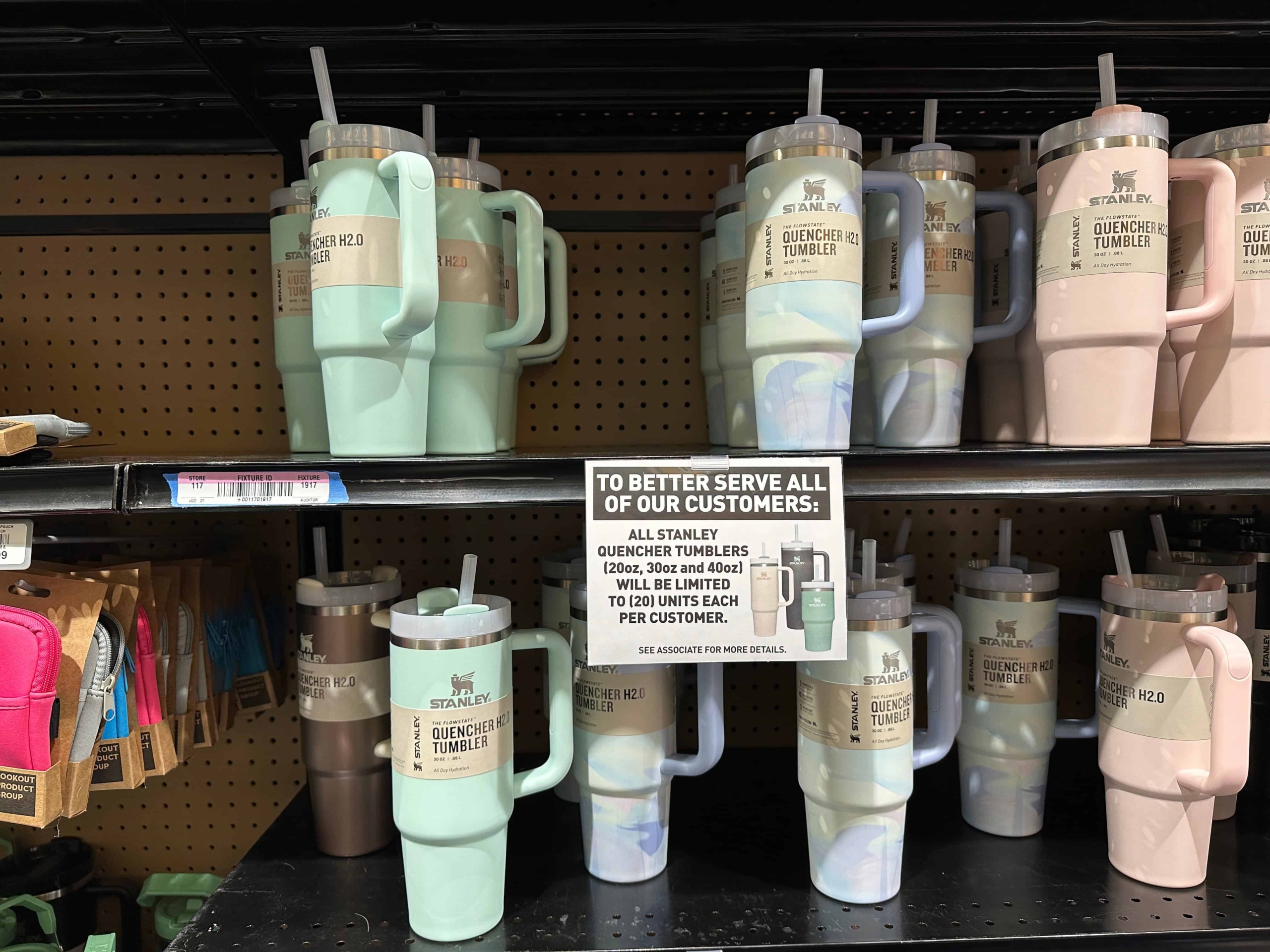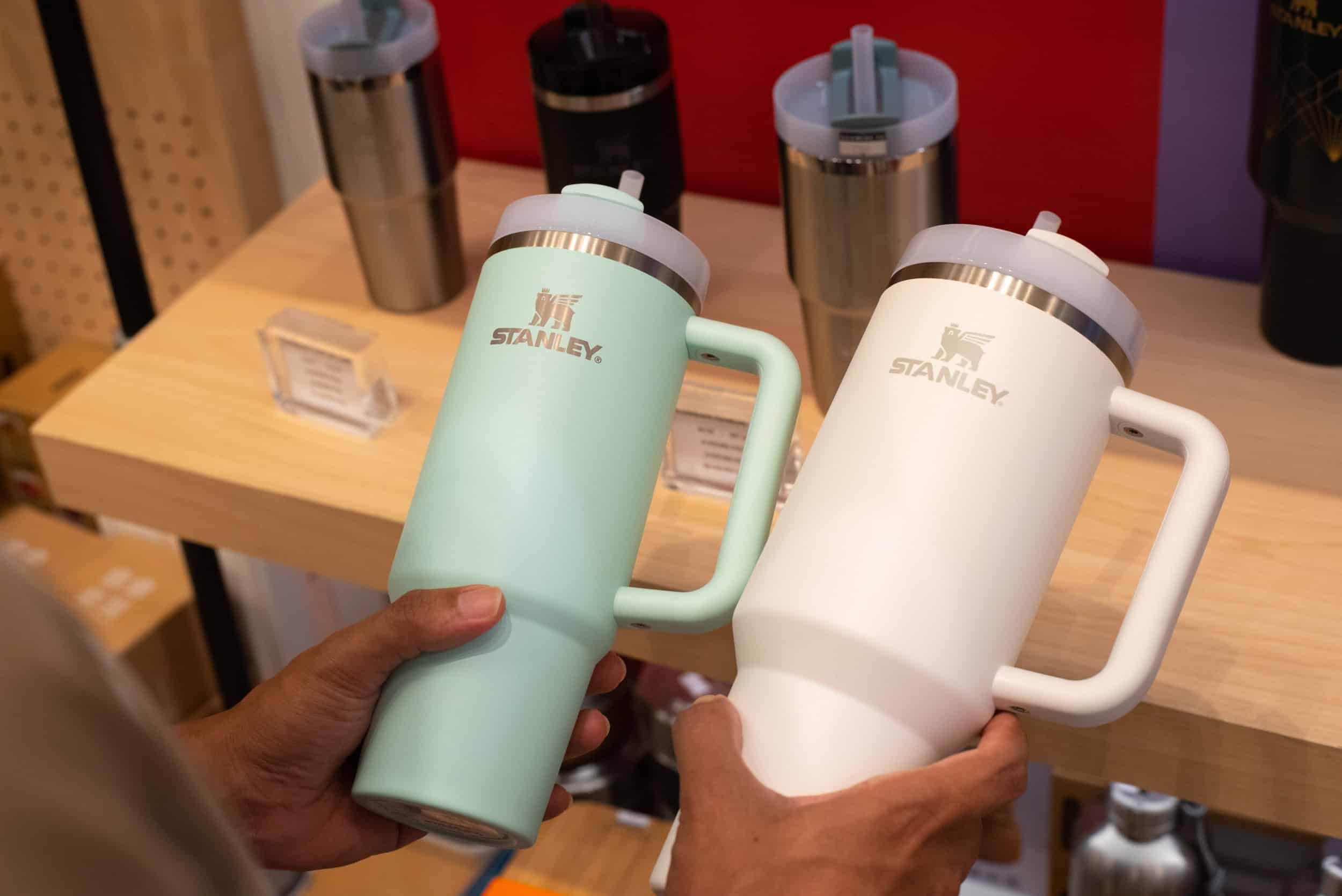Winter is almost here and the sales boom of thermos cups is coming again. How Stanley Cups beat a bunch of competitors to make a name for itself among the young and trendy thermos cups? Where are all Stanley Cups thermos cups made? This article will answer that question for you.
What are Stanley Cups?
History of Stanley

In 1913, William Stanley invented the vacuum-insulated steel thermos flask, successfully combining insulation with durability. Its practical performance made this design quickly popular and widely used in daily life and outdoor activities.
In the mid-20th century, Stanley not only produced thermos flasks, but also expanded its business to include more outdoor-related products, such as lunchboxes, cookware, flasks, etc., and supplied to the military during World War II. the Stanley brand was very popular at that time.
In the 21st century, with the development of the times Stanley brand inevitably faced the crisis of brand aging. However, they have once again seized the node of the times and researched the social media publicity and celebrity linkage publicity.
As a result, in recent years, Stanley’s insulated cups have once again become popular in social media because of their practicality and fashionable appearance, and many people regard them as part of their personal style and a symbol of their lifestyle.
Stanley Brand Positioning
Stanley has positioned itself as a brand that knows exactly what it is supposed to be doing when it is supposed to be doing it.
In terms of quality, Stanley positions itself as high-end. the Stanley brand repeatedly emphasizes the high quality and durability of its insulated cups, and the superior functionality of its branded insulated cups in outdoor adventures. People who buy Stanley Cups not only enjoy the excellent product performance, but also enjoy the psychological satisfaction.
Ideologically, the Stanley brand links itself to the spirit of adventure. by connecting the functionality needed for outdoor adventures with the spirit of adventure, the Stanley brand positions itself to a precise target group: those who love nature, camping, hiking and other outdoor activities. They see Stanley Cups as part of their active gear, giving them a special lifestyle kernel.
In terms of design, the Stanley brand incorporates fashion elements and explores diverse styles, attracting the attention of younger consumers by launching cups in a wide range of colors and styles.
Stanley Cups Target Audience
- Outdoor Enthusiasts
- Environmentalists
- Busy People
- Socializers
- Fitness Enthusiasts
- Stylish Young Consumers
In Which Countries Are Stanley Cups Mainly Manufactured?
Although Stanley is an American brand and its parent company Newell Brands is based in the U.S., Stanley Cups are not manufactured in the U.S. Stanley Cups are mainly manufactured in China, an Asian country, with design and other work done in the U.S. This is mainly due to the cost of production. This mainly takes into account the cost of production, and the combination can get the best quality and profit. This model is also used by many international brands, such as Brunt Boots, Levi’s, Nike and so on.

Why did Stanley Cups Choose to Manufacture in China?
China Factor
- Mature manufacturing capabilities
- Low labor costs
- Well-established supply chain
- Skilled production technology
Global Factors
- Brands want to build global supply chains
- Brands want to be able to respond quickly to the local Chinese and Asian markets.
- China has preferential tariff policies with many countries
- High efficiency of international transportation in Chinese ports
Who are the suppliers of Stanley Cups in China?
Yongkang
Yongkang City is located in the east of Jinhua City, Zhejiang Province, China, and is known as the “Hardware Capital of China”. Due to the industrial concentration effect, it has become the world of hardware, stainless steel products and thermos cup manufacturing. Yongkang is even one of the main production bases of insulation cups and stainless steel products in the world.
Geographically, Yongkang is about 55 kilometers away from Yiwu City, the “world capital of small commodities”, and close to Ningbo Port and Hangzhou, the capital of Zhejiang Province, which is very suitable for foreign trade export and transportation. Therefore, Yongkang is the preferred supplier area for Stanley Cups.
Everich Commerce Group
Everich Commerce Group, located in Ningbo, Zhejiang, China, was founded in 2000 and has more than two decades of manufacturing experience. The company specializes in the production and sale of stainless steel and plastic products, such as water bottles, insulated cups, travel mugs, sports mugs and other products, they have professional production capacity and production experience.
Everich has passed many international certifications such as ISO, BSCI, LFGB, FDA, etc. All products follow the standards of the European and American markets, and the requirements for Stanley Cups can be easily met, which makes them a rare and high-quality supplier.
Xiamen Rise Industrial Co.
Xiamen Rise Industrial Co., Ltd. is located in Xiamen, Fujian, China, and unlike a few other companies that specialize in thermos cups, this one has a much broader scope of production that encompasses the entire outdoor gear industry. They produce camping gear, outdoor furniture, yoga mats, sporting goods, and more, including insulated mugs for outdoor use.
Xiamen Rise Industrial Co., Ltd. has an in-depth understanding of outdoor enthusiasts, knows what kind of thermos cups their target audience needs, and focuses on innovative product design and strict quality control. This is a good fit for Stanley’s market position, so we have established a long-term cooperation.
Water Bottle Co.
Water Bottle Co. is a simple company specializing in high-quality water bottles. They sell stainless steel water bottles, glass water bottles, plastic water bottles, and sports mugs globally, and provide professional OEM and ODM services to meet all of their customers’ customization needs.
Water Bottle Co.’s products are of excellent quality and have also passed international certifications such as ISO, BSCI, LFGB, FDA, etc., which are in line with European and American market standards. Plus they emphasize on environmentally friendly production, which makes Stanley trust them even more.
How are Stanley Cups Made?
Step 1: Select high-quality food-grade stainless steel as the main material and cut it into suitable size and shape by machine to prepare for subsequent processing.
Step 2: Put the stainless steel plate through vacuum forming process to form the inner and outer structure of the mug for heat insulation.
Step 3: The surface of the cup is polished, plated or painted to make the cup more beautiful and durable.
Step 4: In some models of Stanley Cups, the inner wall of the cups will be coated with another layer of anti-rust coating to prolong the service life.
Step 5: Lids, handles and other accessories will be installed onto the cups one by one to make the cups more design and practical.
Step 6: After completing the production, quality inspection is conducted for each cup to test the cup’s heat preservation performance, sealing, drop resistance and safety.
Conclusion
Choosing a supplier factory that has worked with Stanley to co-produce cups does allow for effective screening and quality control. But never be completely assured of a factory, real-time monitoring of product quality is something you should always do.
Of course, if you have encountered any problems regarding sourcing from China, please feel free to contact us at meenogroup. as a professional sourcing agent, we will customize a sourcing plan for you and assist you in sourcing with ease.
FAQ
Who Made Stanley Cups?
The Stanley brand was founded in 1913 by William Stanley Jr. Stanley Cups were also introduced after William Stanley Jr. invented the all-steel vacuum insulated bottle.
Are Stanley Cups Made with Lead?
Stanley Cups are primarily made of stainless steel (usually 18/8 medical grade stainless steel), which is safe and very durable, and is absolutely free of toxins and lead.
Which Stanley Cups Colors Are Hotter?
Stanley’s popular colors vary from season to season and holiday to holiday. But the best sellers are the classic and simple neutrals (such as beige and light grey), in addition to pink stanley cups, purple stanley cups, red stanley cups, and black stanley cups, which are also hot sellers.
Note that if you’re going to do a collection of colors, seasonal limited colors might be a good choice, as Stanley Cups’ seasonal limited colors are hot on social media.
What is the Quality of Stanley Cups Products?
Stanley Cups have become a global phenomenon mainly because of the high quality of their cups.Stanley Cups have excellent thermal insulation, retaining heat for about 6-12 hours and cold for up to 24 hours. The Stanley Cups are durable, food-grade safe, and have an excellent seal due to the use of the best materials, and are trusted by outdoor enthusiasts, travelers, and everyday users.
How is Quality Control Performed on Stanley Cups?
- Selection of high-quality materials.
- Perform precision design.
- Monitor the manufacturing process.
- Handcrafted processes for easy inspection of details.
- Inspect finished products for appearance, weight and other physical characteristics.
- Perform material testing and certification, etc.
How to Buy Stanley Cups?
You can get them at official websites, sporting goods stores, or online retailers (like Amazon, eBay, Walmart, etc.). If it’s for a specific event, you can get it at a souvenir store. If it’s a discontinued model, you can get it on the secondary market.
What Issues Should We Pay Attention to When Cooperating with Chinese Suppliers?
- Supplier selection issues. When choosing suppliers, you should ensure the legitimacy and professionalism of the suppliers, carefully check the registration information, business license and relevant qualification certificates of the suppliers, etc., and do a good background check of the suppliers.
- Language communication problems. When communicating with foreigners, there will inevitably be some communication barriers, in addition to language barriers there will be different cultural practices. You should be clear about your needs and avoid ambiguity in communication.
- Contract terms and conditions. When signing a contract, be sure to check the terms and conditions carefully to protect your rights and interests. Make sure that all agreements are documented in writing, including prices, delivery dates, quality standards, etc.
- Quality control issues. Before placing an order, you can ask the supplier for samples to check the quality of the product yourself first. You need to monitor the production process in real-time during manufacturing. You can also arrange a third-party quality control company to check the products.
- Payment terms issues. You need to clarify the payment method before payment, and use formal and transparent channels to transfer money. If it is a large amount of orders, you can sign the installment payment terms.
- Logistics and transportation issues. Make a good arrangement plan for logistics and transportation in advance, and prepare the necessary documents for customs clearance to avoid the problem of delayed arrival.
- After-sales service. In order to ensure that your products can be dealt with in time when problems arise, you should first clarify the after-sales service terms to ensure that there will be no after-sales disputes.
